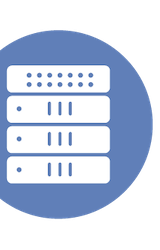At Storage Field Day last month, Jon Klaus saw a presentation from SNIA, where they talked about tail latency. These are tiny spikes in latency, 2-10x longer than higher. These can have big impacts, effecting up to 2% of all IO, which is magnified when seen at a hyperscale level. Smaller organizations might simply over provision to lower overall latency so that these spikes still fall within acceptable ranges, but at scale this approach isn’t practical. SNIA presented several ways to overcome tail latency, and Jon shares his thoughts on what he saw.
There’s a new cluster filesystem on the block, Elastifile
Elastifile debuted their new file system at Storage Field Day last month, and Ray Lucchesi wrote up his thoughts. It’s designed to support thousands of nodes, exabytes of capacity, and infinite numbers of files, in an effort to make a better cluster file system. It was in development since 2013, and offers some impressive features, including compression, deduplication, and cloud storage tiering. It only caches metadata, and maintains consistency thanks to key-value consensus based algorithm called Bizur. Ray’s not sure how it’ll perform in terms of marketshare going forward, but thinks it shows a lot of great backend engineering to offer a competitive file system right out of the gate.
Nimble’s InfoSight – An #SFD12 Follow-up
Matt Leib reviews what he saw from Nimble Storage at last month’s Storage Field Day. He goes into what he really liked about their InfoSight solution. This allows collect information across environments and send it to a secure collective database. This allows you to quickly cross reference anomalies across environments to better diagnose problems. Overall, Matt came away really impressed.
Impact from Public Cloud on the storage industry – An insight from SNIA at #SFD12
SNIA, the Storage Networking Industry Association, presented at Storage Field Day last month, discussing the impact of the public cloud on the overall storage industry. These hyperscale companies operate differently, they buy storage in bulk, but not from traditional enterprise storage companies like Dell EMC or NetApp. Instead, they buy disk directly from manufacturer, often at extremely large scale. Chan Ekanayake thinks that while this will prove to be disruptive for traditional storage companies, overall it will push innovation and be better in the end for customers.
Elastifile launches cross-cloud data fabric
Elastifile launched its Cloud File System at Storage Field Day last month. Andrea Mauro gives the details a run down in this blog post. They’ve designed it as a software-only, scale-out, elastic and flash-native solution, which can bring the efficiency normally found in hyperscale to the enterprise and cloud service providers.
What Next for the new Tier 0 Storage?
Chris Evans takes a look at the state of tier 0 storage, the custom hardware platforms that can deliver millions of IOPS. This was given a shake up recently with Dell EMC’s announcement that they aren’t moving forward with DSSD. Chris thinks the problem with these custom platforms is they can’t keep up with the rapid pace of flash storage development. He sees the future of tier 0 high performance storage with software defined solutions on commodity hardware, like what we’ve seen recently out of Excelero and E8 Storage.
Visiting Intel with SFD 12
Howard Marks was at Storage Field Day and got to see the latest and greatest from Intel. As the current de facto CPU and chipset vendor in the data center, Howard sees them as having an immense responsibility in terms of dictating computer architecture. Luckily from what Howard saw at Intel’s presentation, they are living up to this. As an example, he goes into the applications and implication of their Storage Performance Developer Kit, as well as their recent release of the first commercial 3D XPoint.
Storage Field Day 12 – Wrap-up and Link-o-rama
Dan Frith has done extensive writing about all the presenters and happenings at Storage Field Day earlier this month. He’s compiled a list of all of the posts for easy reference. Make sure to check them all out for Dan’s usual excellent analysis and commentary.
Netapp – an #SFD12 Update
When a company with NetApp’s extensive history and portfolio presents at Storage Field Day, sometimes you don’t know what to expect. Matt Leib certainly found a lot to like from their presentation earlier this month. He got a glimpse into how the company is proceeding in light of the SolidFire acquisition, and remained impressed by their approach. The company has managed to integrate the company without quashing its consistent innovation, always a challenge for a large company like NetApp. Matt saw this innovative spirit actually flowing back into some of NetApp’s new and updated solutions.
SNIA Know What Time It Is
Dan Frith looks at what SNIA presented at Storage Field Day earlier this month. He found it an intriguing presentations, detailing the world of storage in the hyperscaler world. He makes the case for why SNIA has carved themselves out as a valuable asset and standards body in the enterprise storage world.
Datera – Hybrid Is The New Black
Dan Frith wrote up his impressions of Datera’s presentation from Storage Field Day earlier this month. He reviews how the company has progressed in their aim to provide a self-optimizing invisible cloud infrastructure, highlighting their already excellent policy driven autonomous feature. New to this presentation, they are now focusing on delivering the experience while maintaining high performance and lower latencies. Dan further looks at how Datera is able to do this in a hybrid cloud environment.
There’s A Whole Lot More To StarWind Than Free Stuff
StarWind presented at Storage Field Day earlier this month in Silicon Valley. Dan Frith thought they made a compelling case for their storage appliance in the 20 – 40TB hybrid or all-flash space, where high performance is needed cost effectively. Though the HCI space is crowded, he thinks StarWind can differentiate on broad protocol support and practical management features.
StarWind Gives You a Gateway to the Cloud
Rich Stroffolino reviews what he saw from StarWind at Storage Field Day. He particularly looks at their “cloud gateway” hardware, that lets you have addressable cloud storage via a standard SATA interface. It’s an interesting bridge device that could be used to replace spinning disks for cold data.
Storage Field Day 12 – Day 3 Recap | The Partly Cloudy Blog
Adam Bergh went to first Storage Field Day this month. He wrote up a post outlining the presentations he saw at the last day of the event. SNIA and Intel gave Adam a lot of food for thought. SNIA gave an overview of its role in the industry, as well as reviewing the development of hyperscaler storage. Intel reviewed developments with its Storage Performance Development Kit and Resource Director Technology.
Storage Field Day 12 – Day 2 Recap
Adam Bergh went to first first Storage Field Day this month. In this post, he gives some of his thoughts from day two of the event. He heard presentations from Nimble Storage, NetApp, and Datera.
Intel Optane Enters the Market
Rich Stroffolino gives his thoughts on Intel’s release of their first commercial 3D XPoint product, the Optane P4800X. He situates where its initial $1500+ price tag puts it within the world of new storage technology, what the new tech should be good for in the data center, and similarities to existing storage-as-memory products.
Intel SPDK and NVMe-oF will accelerate NVMe adoption rates
Intel’s presentation from Storage Field Day this month certainly made an impression on the delegates. Jon Klaus wrote up his thoughts. He goes into particular details over SPDK and NVMe over Fabrics, both of which he thinks will have genuine business impacts for overall NVMe adoption. For Jon, this is an example of Intel pushing software to truly catch up to recent advances in hardware.
Intel Are Putting Technology To Good Use
Intel’s Storage Performance Development Kit made quite an impression on the Storage Field Day delegates. Dan Frith is no exception. He’s written up his thoughts on how it impact the emerging NVMe storage space. SPDK is able to offer much lower latency and better scaling IOPS than the standard Linux kernel, mainly by replacing its kernel-based interrupt-driven driver. This centers storage CPU needs on dedicated cores, and frees up overall system resources. In use cases, early customers have seen a roughly 300% improvement in latency and IOPS. The presentation left Dan “mighty excited”!
The Datera Company overview
Arjan Timmerman wrote an overview of some of the company principals he learned while visiting Datera at Storage Field Day earlier this month. Their presentation started with an overview from CEO Marc Fleischmann. He explained that Datera wants to give companies the ability to create their own architecture as a service, enabling them to develop true hybrid cloud solutions. Arjan found the presentation really engaging and was pleased to hear more from Datera.
Excelero NVMesh 1.1
Andrea Mauro might not have been at Storage Field Day earlier in March, but he wrote up his thoughts on Excelero’s launch presentation at the event. He’s intrigued by their NVMesh 1.1 product, which is a Software-Defined Block Storage solution, which offers low latency, scale-out performance on NVMe, and virtually 0% strain on the target CPU.







